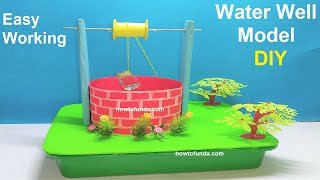Here are 25 science projects that incorporate pulleys and levers, offering hands-on exploration of physics principles:

Pulleys
- Simple Pulley System:
- Build a basic pulley system using ropes and pulleys to demonstrate how force can be multiplied to lift heavy objects.
- Block and Tackle Mechanism:
- Create a block and tackle system using multiple pulleys to explore mechanical advantage and lifting capacities.
- Pulley Elevator:
- Construct a model elevator using pulleys to lift a small platform or load, demonstrating the application of pulleys in vertical movement.
- Pulley Clothesline:
- Design a clothesline system using pulleys to easily raise and lower a clothesline for drying clothes.
- Pulley Crane:
- Build a small crane using pulleys and ropes to lift and move objects horizontally, demonstrating the principles of a crane mechanism.
Levers
- Class 1 Lever Experiment:
- Construct a seesaw using a wooden board and a fulcrum to demonstrate how a class 1 lever balances weights on opposite sides.
- Class 2 Lever Model:
- Create a model of a wheelbarrow using a lever to lift and transport loads, demonstrating the mechanical advantage of a class 2 lever.
- Class 3 Lever Demonstration:
- Build a model of a fishing rod or tweezers to show how a class 3 lever amplifies force for precise movements.
- Levers in the Human Body:
- Study the levers in the human body, such as the arm and leg bones, and demonstrate how they function to create movement.
- Levers in Sports Equipment:
- Analyze sports equipment like a baseball bat or tennis racket to identify levers and their mechanical advantage in sports.
Combined Projects
- Compound Machine:
- Create a compound machine that combines pulleys and levers to perform a task, such as lifting a weight using a lever and pulley system.
- Pulley and Lever Balance:
- Design a balance scale using a lever and pulleys to measure weights and explore the equilibrium of forces.
- Pulley Door Opener:
- Build a mechanism using pulleys and levers to automate the opening and closing of a door, demonstrating mechanical advantage.
- Pulley and Lever Puppet:
- Construct a puppet with moving arms and legs controlled by a system of pulleys and levers to demonstrate fluid motion.
- Pulley and Lever Catapult:
- Create a small catapult using a lever and pulleys to launch objects, exploring projectile motion and force multiplication.
Physics Demonstrations
- Force Measurement with Pulleys:
- Use a pulley system to measure forces by balancing weights and calculating mechanical advantage.
- Energy Efficiency Study:
- Compare the efficiency of different pulley and lever configurations in lifting loads and transferring energy.
- Friction and Pulleys:
- Investigate the role of friction in pulley systems by adjusting materials and observing changes in mechanical advantage.
- Pulley Speed and Velocity:
- Study the relationship between pulley size and speed of movement to calculate velocities and accelerations.
- Torque and Levers:
- Experiment with different lever lengths to observe changes in torque and rotational motion.
Practical Applications
- Pulley and Lever Water Well:
- Build a model water well using pulleys and levers to simulate drawing water from a depth, illustrating historical and practical applications.
- Pulley and Lever Rescue Device:
- Design a rescue device using pulleys and levers to lift and evacuate a weight or dummy, mimicking real-life rescue operations.
- Pulley and Lever Toy Design:
- Create a toy using pulleys and levers to engage children in understanding basic physics concepts through play.
- Pulley and Lever Garden Tool:
- Build a gardening tool using pulleys and levers to assist with lifting and moving heavy objects in a garden or workshop.
- Pulley and Lever Rube Goldberg Machine:
- Construct a Rube Goldberg machine incorporating pulleys and levers to perform a series of tasks in a complex yet entertaining manner.
These projects provide a range of opportunities for students to explore and apply principles of pulleys and levers, encouraging creativity, problem-solving, and a deeper understanding of physics concepts.

